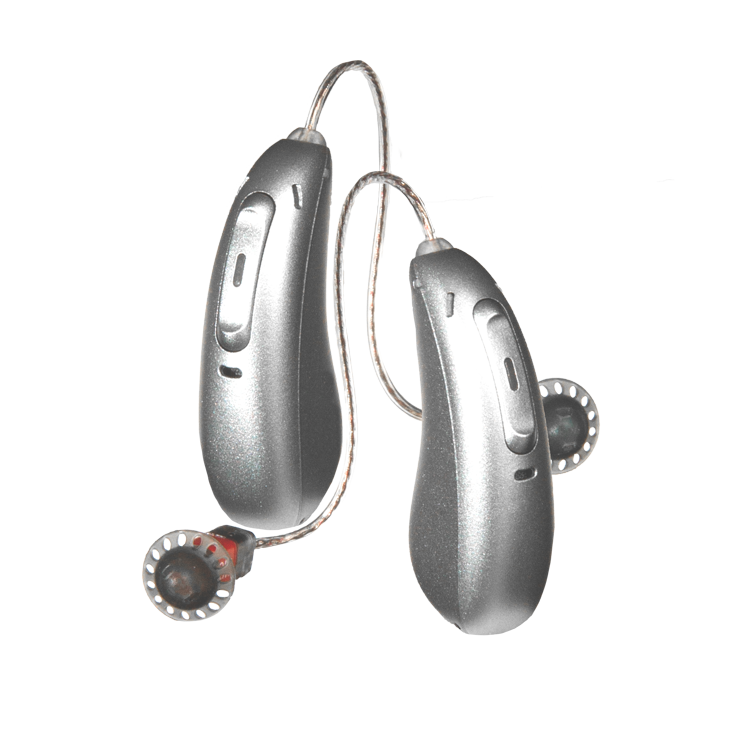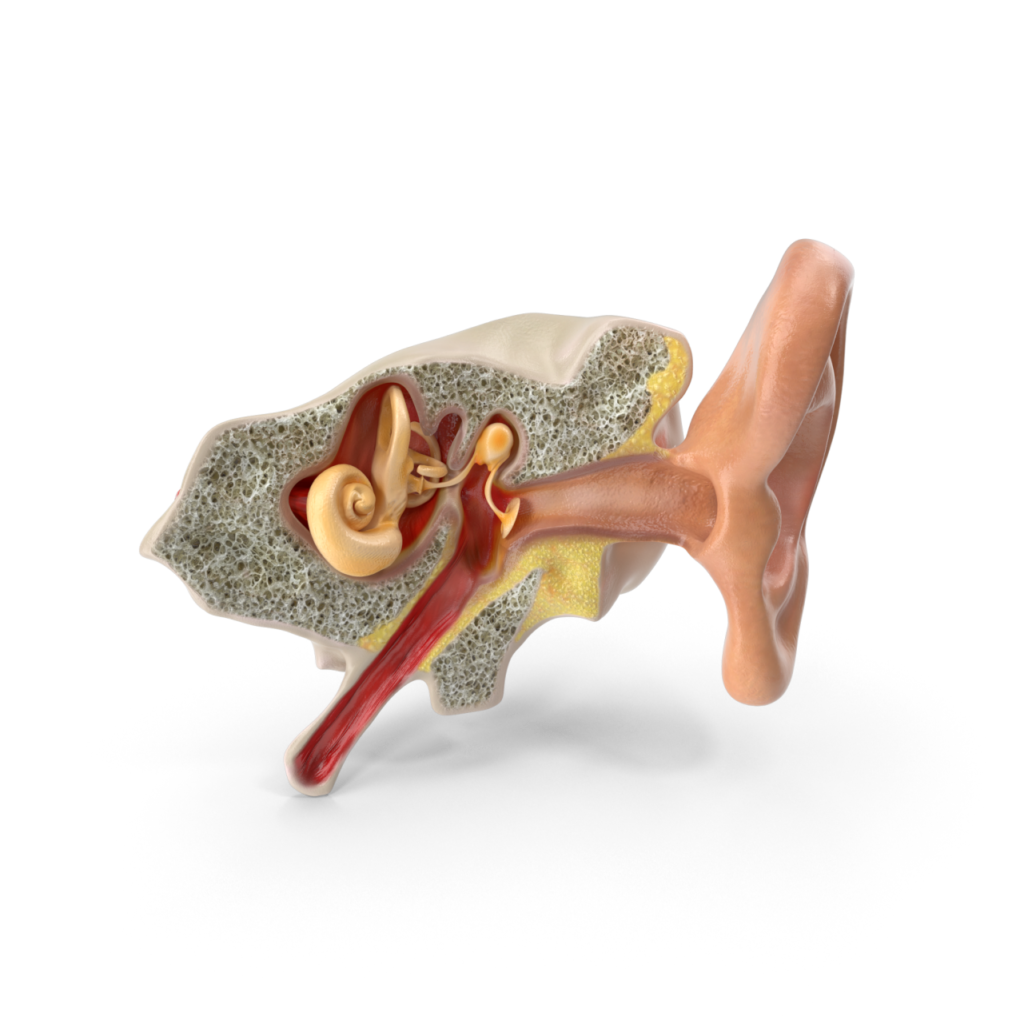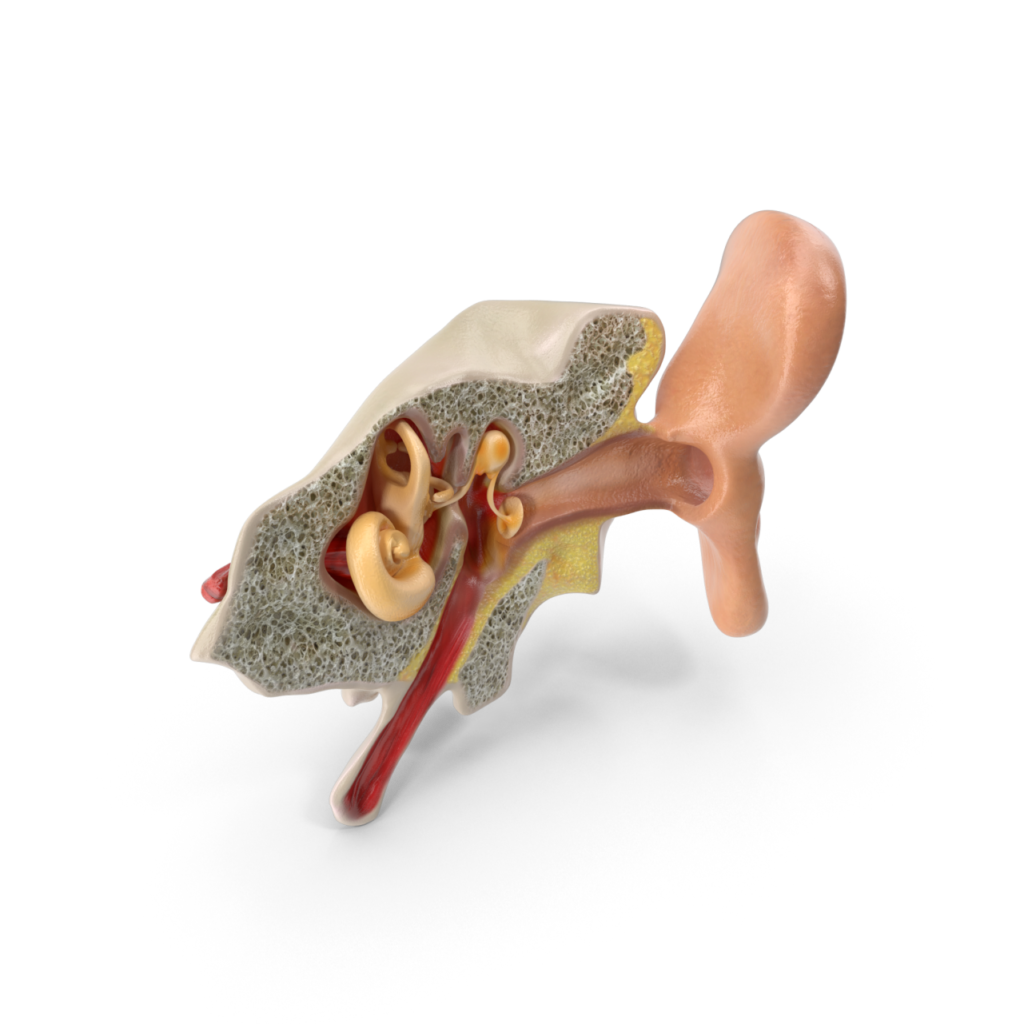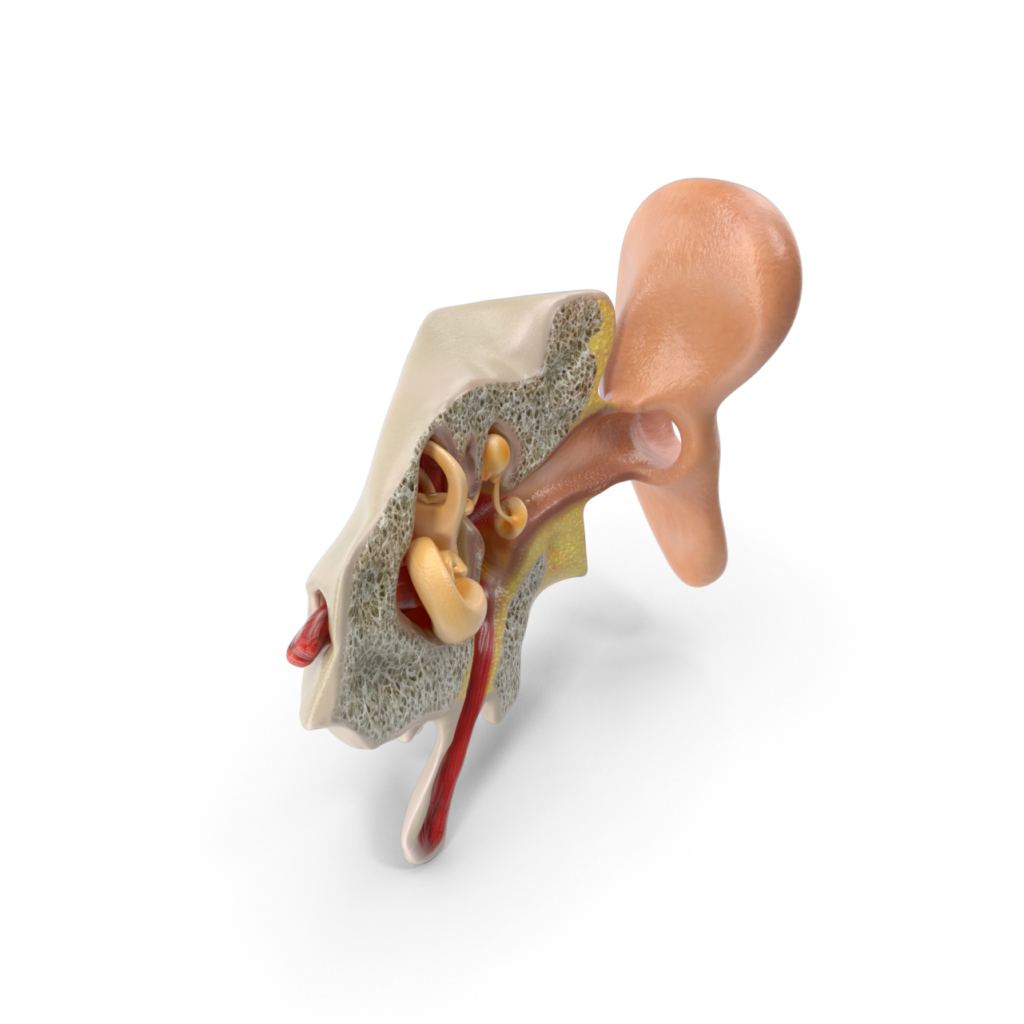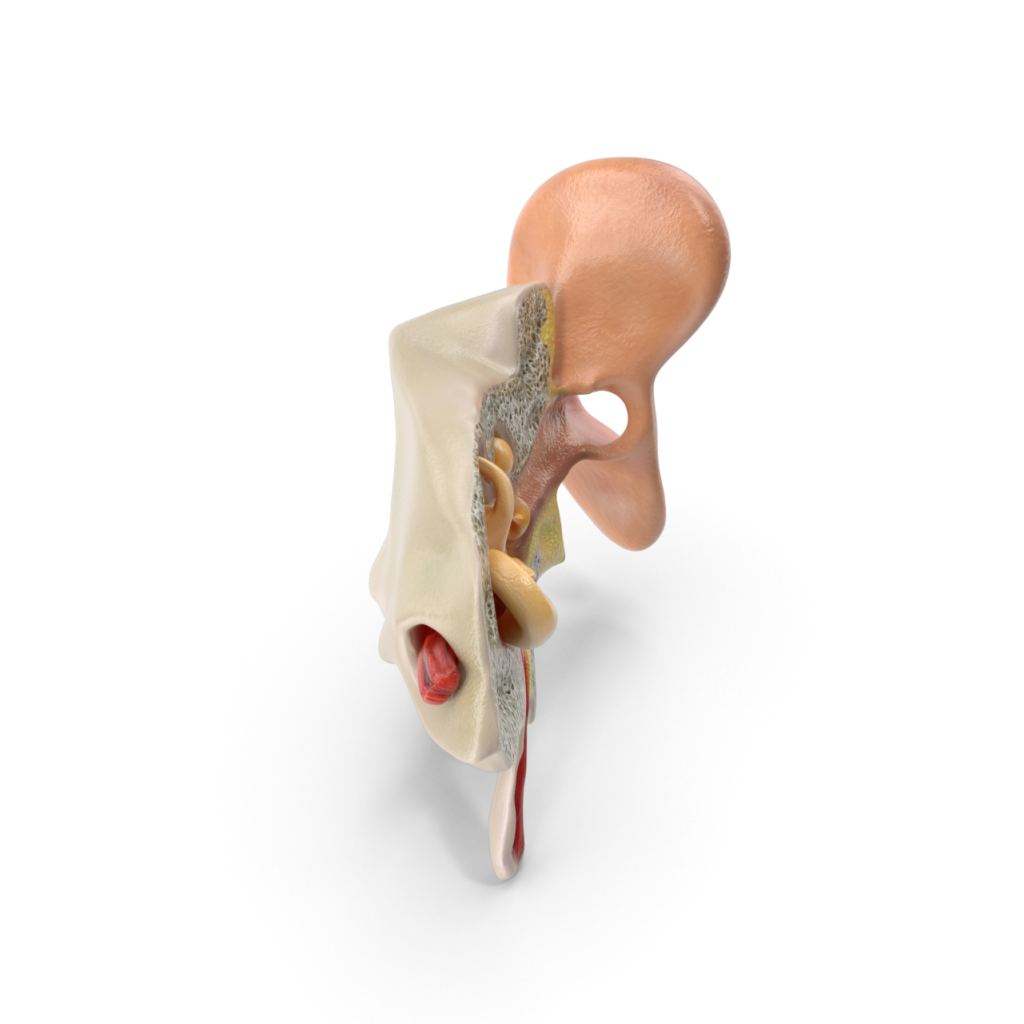
It sounds obvious, but it’s still important to note that aging and chronic exposure to loud noises both contribute to hearing loss. Other factors, such as excessive earwax (seriously, clean your ears), can temporarily reduce how well your ears conduct sounds.
You can’t reverse most types of hearing loss, unfortunately. However, you and your Injoy specialist can take steps to improve what you hear. We’re going to get a bit more clinical as we go on, so stick with us and learn more about how your ears work!
Parts Of The Ear
The ear is made up of three primary parts: the outer ear, middle ear, and inner ear. Each section is composed of different structures. All of these play distinct roles in the process of converting sound waves into signals that go to the brain.
The outer ear is composed of the visible part of the ear (pinna) and the ear canal. The cup-shaped pinna (PIN-uh) gathers sound waves from the environment and directs them into the ear canal.
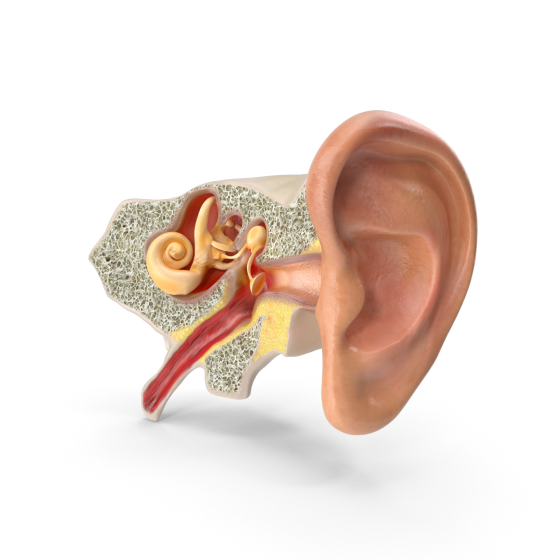

How you hear
To understand how hearing loss occurs, it can be helpful to first understand how you hear.
Your ear consists of three major areas: the outer ear, middle ear, and inner ear. Sound waves pass through the outer ear and cause vibrations at the eardrum. The eardrum and three small bones of the middle ear amplify the vibrations as they travel to the inner ear. There, the vibrations pass through fluid in a snail-shaped structure in the inner ear (cochlea).
Attached to nerve cells in the cochlea are thousands of tiny hairs that help translate sound vibrations into electrical signals that are transmitted to your brain. Your brain turns these signals into sound.
Symptoms
Again, it’s not too hard to tell if you’re experiencing the symptoms of hearing loss. You’ll probably notice pretty quickly. However, some of the most common signs may include:
- Muffling of speech and other sounds
- Difficulty understanding words, especially against background noise or in a crowd
- Trouble hearing consonants
- Frequently asking others to speak more slowly, clearly, and loudly
- Needing to turn up the volume of the television or radio (or having others tell you that the TV/radio is too loud)
- Withdrawal from conversations
- Avoidance of some social settings
When to see a doctor
If you have a sudden loss of hearing, particularly in one ear, seek immediate medical attention.
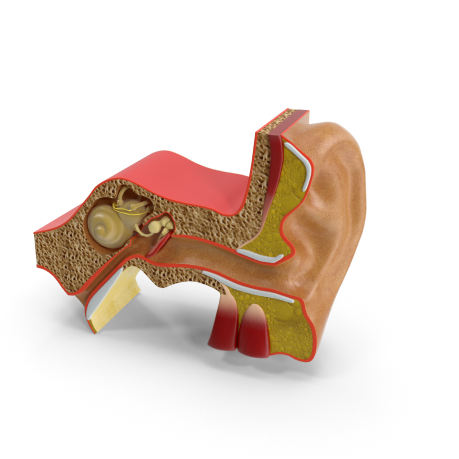

Causes
How Hearing Loss Can Occur
Causes of hearing loss include:
Damage to the inner ear – Aging and exposure to loud noise may cause wear and tear on the hairs or nerve cells in the cochlea that send sound signals to the brain. When these hairs or nerve cells are damaged or missing, electrical signals aren’t transmitted as efficiently, and hearing loss occurs. Higher pitched tones may become muffled to you. It may become difficult for you to pick out words against background noise.
Ear infection and abnormal bone growths or tumors – In the outer or middle ear, any of these can cause hearing loss.
Ruptured eardrum (tympanic membrane perforation)- Loud blasts of noise, sudden changes in pressure, infection, or even poking your eardrum with an object can cause your eardrum to rupture and affect your hearing.
Comparing Sound Levels
Comparing loudness of common sounds
The chart below lists common sounds and their decibel levels. The Environmental Protection Agency’s (EPA) safe noise level is 70 decibels. The louder the noise, the less time it takes to cause permanent hearing damage.
Sound Levels of Common Noises
Decibels
Noise Source
Safe Range
30
Whisper
40
Refrigerator
60
Normal Conversation
75
Dishwasher
Sound Levels of Dangerous Noises
Decibels
Noise Source
Risk Range
85
Heavy City Traffic, School Cafeteria
95
Motorcycle
100
Snowmobile
110
Chain Saw, Jackhammer, Rock Concert, Symphony
115
Sandblasting
120
Ambulance Siren, Thunder
140-165
Firecracker, Firearms
Maximum Sound Exposure Durations
Below are the maximum noise levels on the job to which you may be exposed without hearing protection, and for how long.
Maximum Job-Noise Exposure Allowed By Law
Decibels
Duration, Daily
Based on occupational safety & health administration, 2008
90
8 Hours
92
6 Hours
95
4 Hours
97
3 Hours
100
2 Hours
102
1.5 Hours
105
1 Hour
110
30 Minutes
115
15 Minutes or Less
Complications
Hearing loss can have a significant effect on your quality of life. To state the obvious, losing your hearing sucks and can be extremely frustrating. Older adults with hearing loss may report feelings of depression. Because hearing loss can make conversation difficult, some people experience feelings of isolation. Hearing loss is also associated with cognitive impairment and decline.
The mechanism of interaction between hearing loss, cognitive impairment, depression, and isolation is being actively studied. Initial research suggests that treating hearing loss can have a positive effect on cognitive performance, especially memory.
Prevention
The following steps can help you prevent noise-induced hearing loss and avoid worsening of age-related hearing loss:
Protect your ears – Limiting the duration and intensity of your exposure to noise is the best protection. In the workplace, plastic earplugs or glycerin-filled earmuffs can help protect your ears from damaging noise.
Have your hearing tested – Consider regular hearing tests if you work in a noisy environment. If you’ve lost some hearing, you can take steps to prevent further loss.
Avoid recreational risks – Activities such as riding a snowmobile, hunting, using power tools, or listening to rock concerts can damage your hearing over time. Wearing hearing protectors or taking breaks from the noise can protect your ears. Turning down the music volume is helpful too.
Get in touch with us. Injoy your life again.
Injoy creates custom hearing solutions based on the unique needs of our clients. Our team is the best in the business, having helped people across the country find hearing solutions for several years. Improve your hearing and improve your life today by contacting Injoy!
